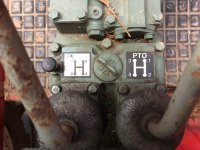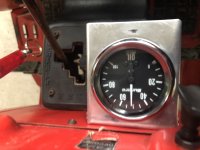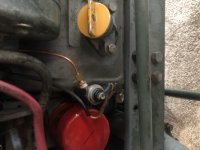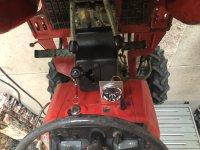So my oil light was not coming on but I still wanted to know what my actual pressure was doing so I installed a gauge, and kept the oil light. I've attached a few pics to show how I did it. You'll need to remove the current sending unit from where it threads into the block and install a tee fitting into the block. Be advised that the threads on the sending unit and in the block ARE NOT standard American Pipe Threads! If you try to screw a 1/8' NPT fitting into the block, it will go in but it will forever damage the threads in the block, and probably leak. The threads in the block are British pipe threads and have a different included angle on the thread form themselves and a slightly different pitch. You will need to get a tee (from Hoye, or Amazon) that has British male threads, the straight port will be British female pipe threads, and the 90 degree port will be 1/8 american pipe female. Refer to the photos but basically you can then install the tee into the block, then the sending unit will screw into the straight port, and the oil pressure gauge capillary fitting will screw into the 90 degree port and then you'll just have to route the capillary tube and figure out how you want to mount the gauge. With this set-up, you'll not only be able to see your actual pressure, you'll know if you have a bad sending unit. If it is bad, then you can get the correct one from Hoye. Hope this helps. As a reference, when I am running the tractor on a hot day with the brush hog, I run about 50 psi at PTO speed and about 15-20 psi at idle after a long run with everything hot. You should be close to that range.






